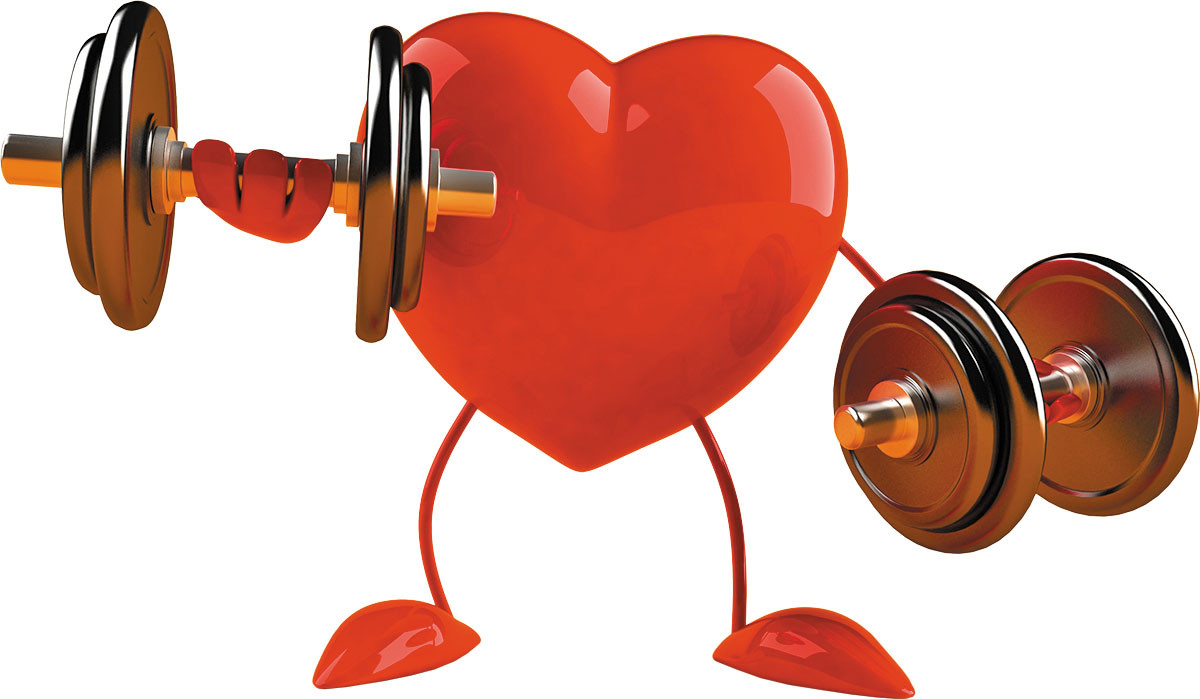Can stronger muscles pump up your heart health?
Any kind of development that makes your heart work more diligently than expected — energetic strolling, moving, or cycling — will profit your heart wellbeing. In any case, numerous individuals don’t understand that focused activities to fortify muscles all through your body may likewise help fight off coronary illness.
“Before, solid muscles were viewed as useful for the most part from a useful point of view — that is, they make undertakings, for example, conveying staple goods and doing clothing simpler,” says Dr. I-Min Lee, an educator of medication at Harvard Medical School who considers the job of physical action in ailment counteraction. Those advantages are especially significant as individuals age.
Muscle versus fat
Presently, there’s more enthusiasm for taking a gander at how a higher bulk may bring down the danger of diabetes and cardiovascular sickness, says Dr. Lee. Bulk decays normally with age, and the vast majority supplant lost muscle with fat. Muscle-building activities can help neutralize that pattern.
Studies recommend that quality preparing may support your metabolic rate (the rate at which your body changes over vitality stores into working vitality) by up to 15%. You’ll consume more calories, even while you’re sitting or resting. One investigation found that solid men who completed 20 minutes of every day weight preparing had less of an age-related increment in stomach fat (which is particularly hard on the heart) contrasted and men who invested a similar measure of energy doing oxygen consuming exercises. Moreover, muscle tissue is all the more metabolically dynamic, so it assists control with blooding sugar and brings down insulin obstruction. That forestalls type 2 diabetes, a significant hazard factor for coronary illness.
Getting more grounded
Quality preparing should be possible with obstruction groups, little hand loads, or weight machines. On the off chance that you would prefer not to join an exercise center, considering purchasing a lot of obstruction groups, Dr. Lee recommends. They’re light and economical, and you can do practically any sort of muscle-reinforcing exercise with them. Those that look like huge elastic groups with circles or handles on each end are frequently most straightforward to utilize. Numerous brands follow a similar dynamic shading scale, running from yellow (the simplest, least obstruction), at that point red, green, blue, and dark (the most troublesome, most elevated opposition).
A balanced program works all significant muscle gatherings: legs, hips, back, stomach area, chest, shoulders, and arms. It’s ideal on the off chance that you can take a class (maybe at a nearby Y or senior focus) to become familiar with the various sorts of opposition band works out. Be that as it may, you can begin by attempting the two activities included here. Make certain to heat up first by walking set up and swinging your arms for a couple of moments. Utilize the band that gives the least obstruction (the stretchiest one) and focus on a mid-run level of exertion (state, around 5 or 6 on a size of 10). Start with a solitary arrangement of eight to 12 redundancies (reps) of each move, at that point bit by bit develop to a few sets as you feel capable. Rest for a moment or two between each set.
Beginning position: Stand on the opposition tubing with your feet hip-width separated. Bring the obstruction tubing up behind your shoulders so you are holding the handles on your shoulders with your palms looking ahead.
Development: Hinge forward at the hips and curve your knees to bring down your rear end toward the floor as though plunking down in a seat. All through the development, press your weight once more into your heels and keep the handles on your shoulders. Come back to the beginning position.
Beginning position: Stand with the opposition tubing under your feet. Position your feet hip-width separated and place your hands at your sides with thumbs pointing forward as you hold the handles.
Development: Squeeze your shoulder bones together while you gradually lift your arms toward the two front corners of the room, making a V as you raise the obstruction tubing. Go no higher than your shoulders. Gradually come back to the beginning position.

